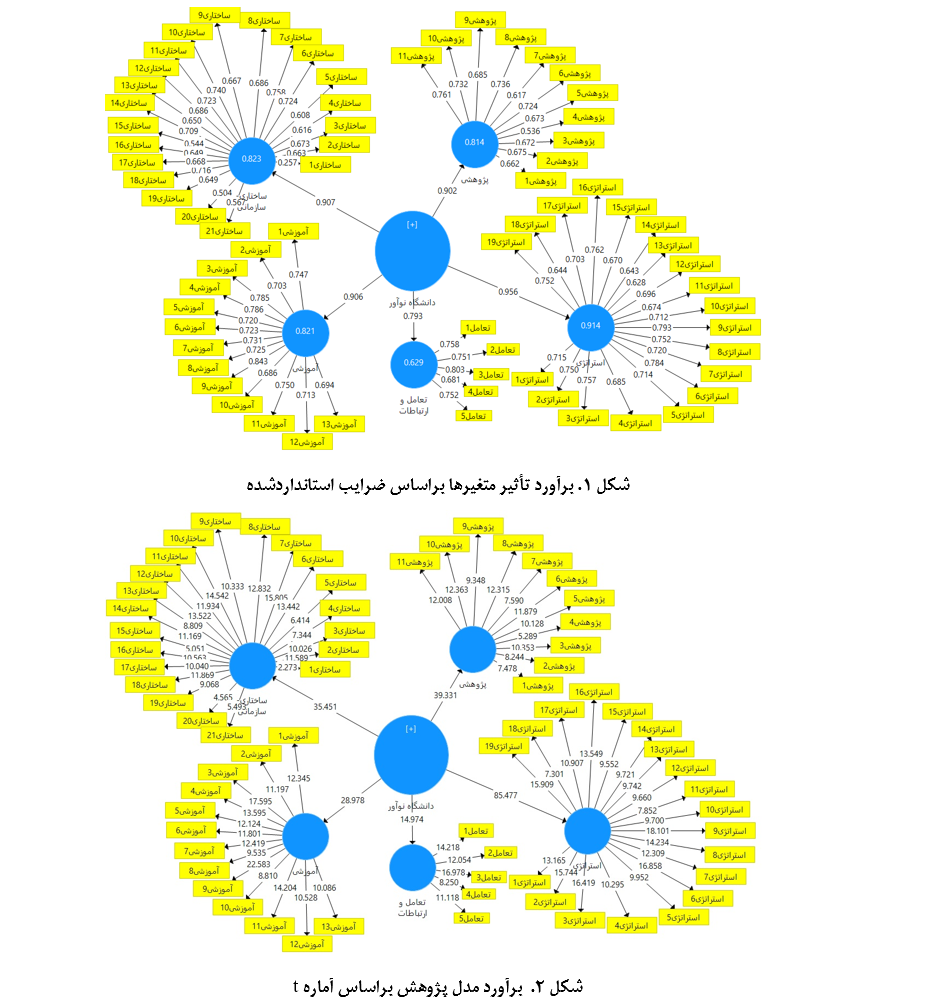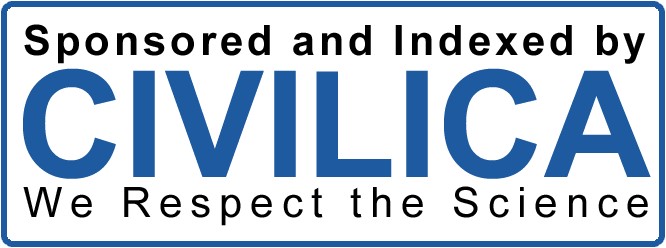Examining Influential Dimensions on Innovative Universities in Iraq's Higher Education
Keywords:
dimensions of innovative university, Iraqi universities, Iraqi higher educationAbstract
The present study aimed to examine the influential dimensions on innovative universities in Iraq's higher education using a descriptive-survey method during the 2023–2024 academic year. The statistical population included all faculty members and administrators of universities in Iraq. A sample of 385 individuals was determined based on Cochran's formula and selected through random sampling. For data collection in the quantitative phase, a researcher-made questionnaire was employed. The validity of the instrument was assessed using face and content validity, which included two indices: the Content Validity Ratio (CVR) and the Content Validity Index (CVI). To determine the reliability of the instrument, Cronbach's alpha and composite reliability were used. Data analysis involved frequency, percentage, charts, tables, mean, and standard deviation. The Kolmogorov-Smirnov test was applied to check the normality of data distribution. To address the research questions, statistical tests such as the Kolmogorov-Smirnov test, confirmatory factor analysis, and model fit indices (ranging from 1 to 2.33 as less desirable, 2.33 to 3.66 as moderately desirable, and 3.66 to 5 as desirable) were employed. Data analysis was conducted using SPSS 21 and SmartPLS 3 software. The findings indicated that strategic, structural-organizational, educational, research, and interaction dimensions respectively had the greatest impact on innovation in Iraqi universities. The proposed model demonstrated strong fit, highlighting the importance of strategic planning and organizational infrastructure in fostering innovation. The study emphasizes the need for innovative strategies, improved organizational structures, and enhanced international collaborations. This model can aid in advancing innovation in Iraqi universities and aligning them with global developments.
Downloads
References
Mousavi Khatir SJ, Naderi, Abili, Khodayar. The Role of Knowledge Management Mechanisms in Improving
Innovation in Public Universities in Tehran. Creativity and Innovation in Humanities. 2016;6(3):179-212.
Thomas E, Pugh R, Soetanto D, Jack SL. Beyond ambidexterity: Universities and their changing roles in driving
regional development in challenging times. The Journal of Technology Transfer. 2023;48(6):2054-73. doi: 10.1007/s10961-
-09992-4.
Javanmardi S, Abbaspour A. Identifying Factors Related to Innovative Universities. New Educational Thoughts.
;18(2):107-35.
Abdoli L, Moradi N, Pardakhti MH, Ahmadi G. Initiative-Oriented Academic Model and Its Communication
Interactions (Case Study: Islamic Azad Universities of Tehran). Scientific and Research Bimonthly Journal of New Approach
in Educational Management. 2024.
Gholipour AR, Ghorbani, Hafezian. Designing an Innovative University Model Using a Qualitative Approach (Case
Study: Islamic Azad Universities of North Khorasan). Creativity and Innovation in Humanities. 2024;13(49):35-69.
Mahdi R, Keikha A. The Status of Innovation in Governance and Leadership of Tier-One Universities in Iran.
Scientific Research Quarterly of Cultural Strategy. 2023.
Alipour M. Value-Based Innovative University: Moving Towards the Soft Technologies Generation of Universities.
Quarterly Journal of Islamic Iranian Progress Model Studies. 2022;10(2).
Barzegar G, Naderegholi, Taghipour Z. Presenting a Model for Creating Innovation Capacities in Academic
Management in Iran. Management and Planning in Educational Systems. 2020;14(1):43-70. doi: 10.52547/MPES.14.1.43.
Ahmadzadeh S, Shekouh Z. The Role of Social Capital in Achieving Organizational Innovation and Organizational
Citizenship Behavior with the Mediating Role of Sustainable Human Resource Management. Innovation Management in
Defense Organizations. 2020;3(3):151-78.
Pourabrahimi H, Ebrahimi B, Banfsheh, Eghbali, Bandari. Explaining Challenges in Applying Innovative and
Technological Universities in the Higher Education System. Strategies in Medical Education. 2021;13(64):682-9.
Jafarzadeh Ghadimi R, Enayati T, Salehi M. Identifying Dimensions of an Innovative University for Model
Presentation (Case Study: Islamic Azad University). Iranian Journal of Educational Sociology. 2018;8(1):115-35.
Turki A. The impact of work pressures on job performance within the modified role of innovative e capabilities:
Applied study in iraqi universities. International Journal of Professional Business Review: Int J Prof Bus Rev. 2024;9(3):4. doi:
26668/businessreview/2024.v9i3.4308.
Khrifech L, Al-Ani AK. The Possibility of Establishing an Iraqi University Business Incubator and Its Expected
Impact on Entrepreneurship: An Analytical Study in a Sample of Iraqi Universities. Asian Journal of Economics, Business and
Accounting. 2024;24(6):356-70. doi: 10.9734/ajeba/2024/v24i61367.
Abdulkarem HA, Hasan AM. Investing in Education and Scientific Research for Growth of Iraq: Exploring the Main
Dimensions, Success Factors, and Government Policies. Journal of Economics and Administrative Sciences.
;30(141):406-21. doi: 10.33095/q0kdja17.
Budur T, Demirer H, Rashid CA. The effects of knowledge sharing on innovative behaviours of academicians;
mediating effect of innovative organization culture and quality of work life. Journal of Applied Research in Higher Education.
;16(2):405-26. doi: 10.1108/JARHE-08-2022-0257.
Morawska-Jancelewicz J. The role of universities in social innovation within quadruple/quintuple helix model:
Practical implications from polish experience. Journal of the Knowledge Economy. 2022;13(3):2230-71. doi: 10.1007/s13132-
-00804-y.

Downloads
Published
Submitted
Revised
Accepted
Issue
Section
License
Copyright (c) 2024 Journal of Study and Innovation in Education and Development

This work is licensed under a Creative Commons Attribution-NonCommercial 4.0 International License.










